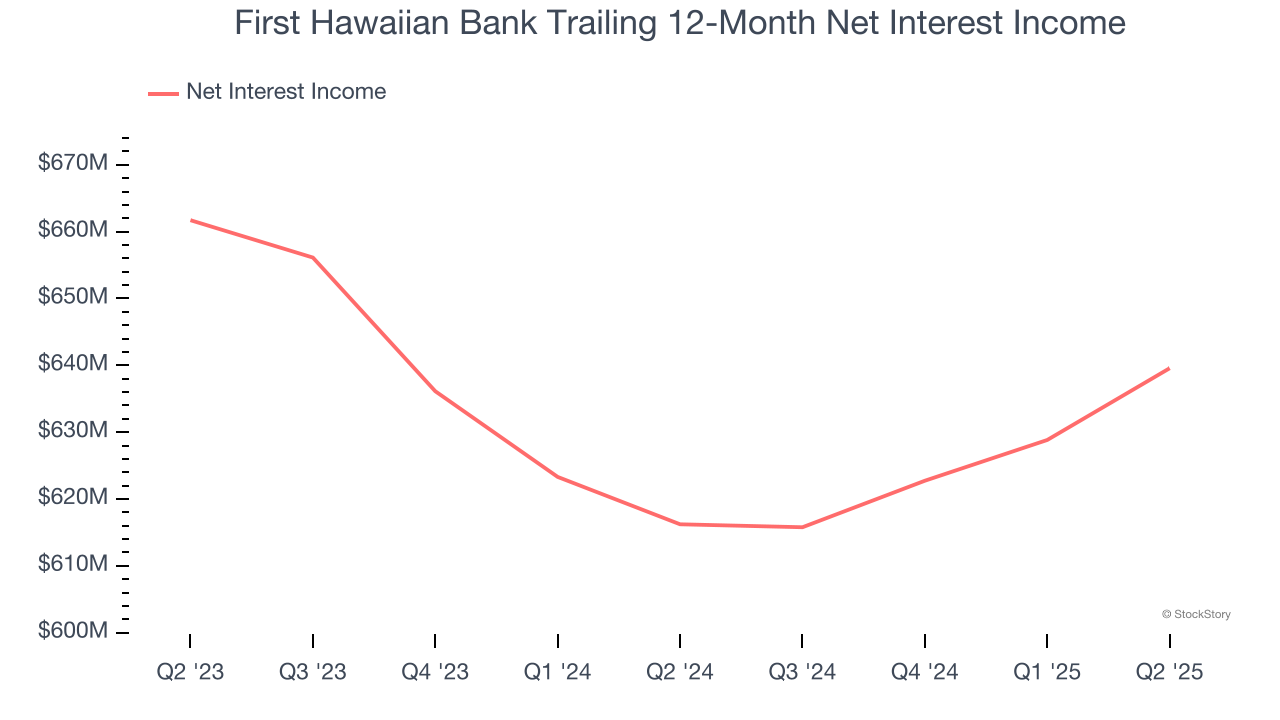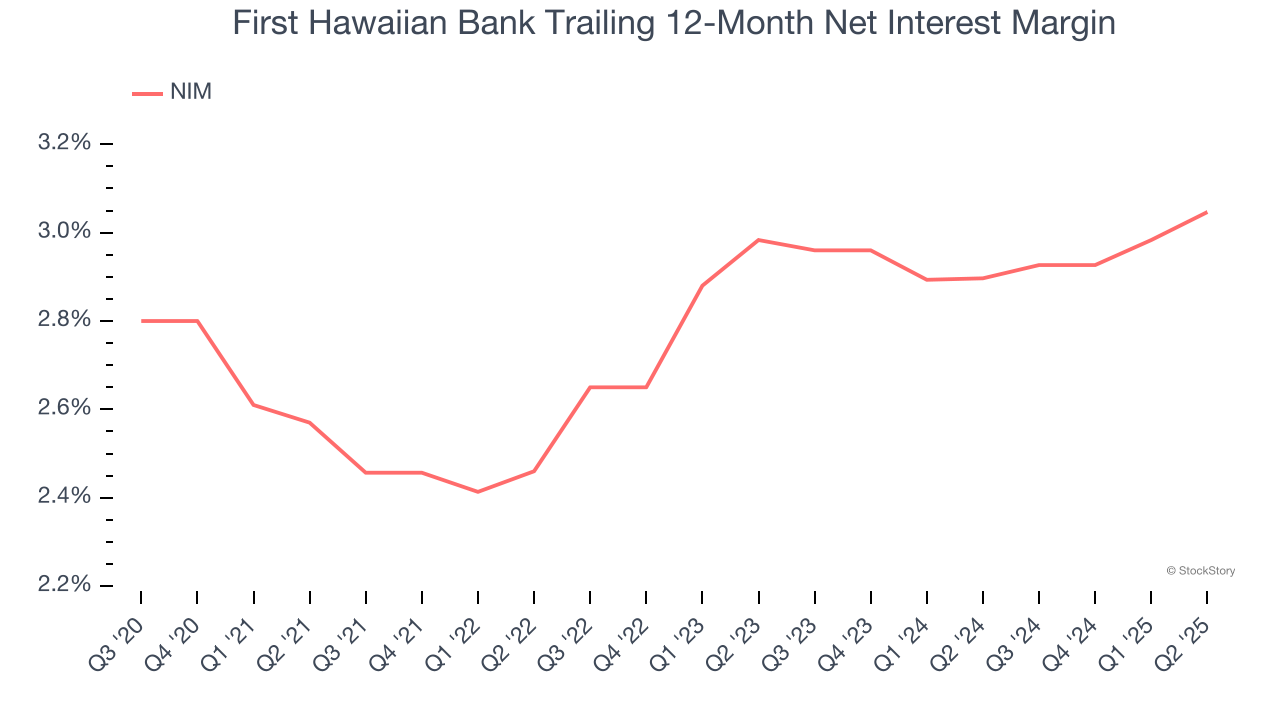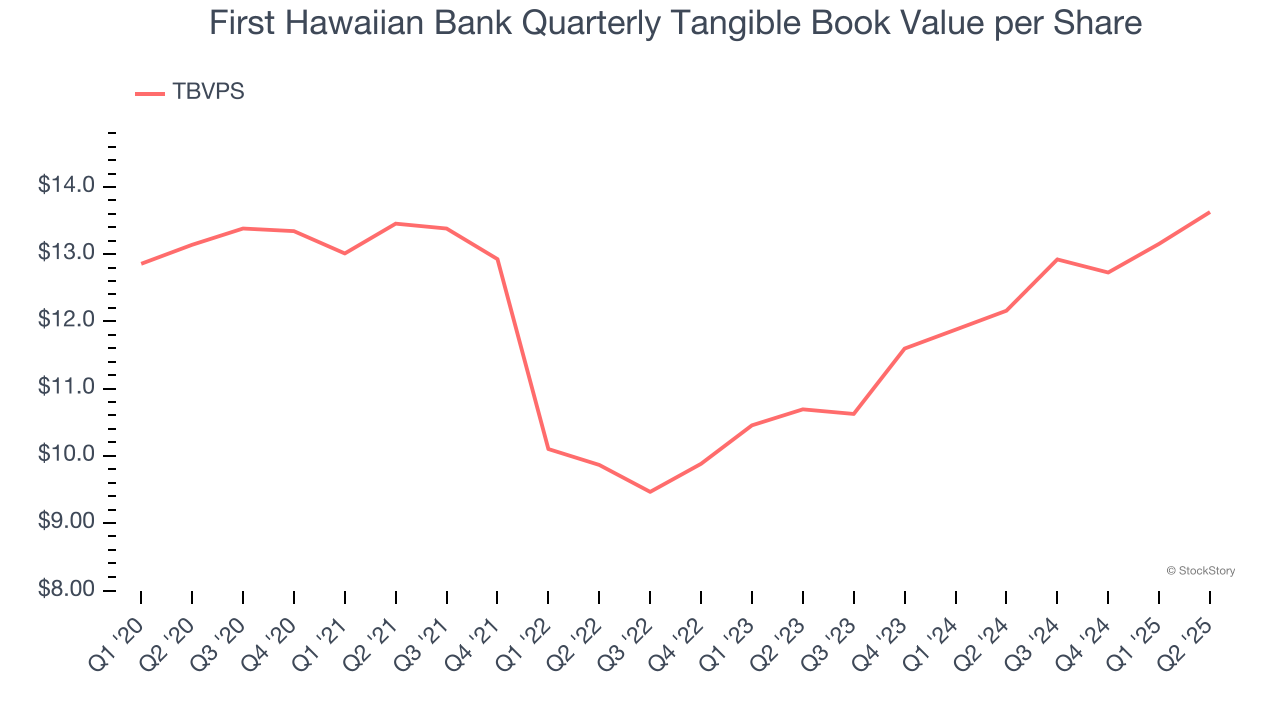
Although First Hawaiian Bank (currently trading at $24.50 per share) has gained 8.1% over the last six months, it has trailed the S&P 500’s 24.7% return during that period. This might have investors contemplating their next move.
Is now the time to buy First Hawaiian Bank, or should you be careful about including it in your portfolio? See what our analysts have to say in our full research report, it’s free.
Why Is First Hawaiian Bank Not Exciting?
We're swiping left on First Hawaiian Bank for now. Here are three reasons there are better opportunities than FHB and a stock we'd rather own.
1. Net Interest Income Points to Soft Demand
Net interest income commands greater market attention due to its reliability and consistency, whereas one-time fees are often seen as lower-quality revenue that lacks the same dependable characteristics.
First Hawaiian Bank’s net interest income has grown at a 4% annualized rate over the last five years, worse than the broader banking industry. Its growth was driven by both an increase in its outstanding loans and net interest margin, which represents how much a bank earns in relation to its outstanding loan book.

2. Low Net Interest Margin Reveals Weak Loan Book Profitability
Net interest margin (NIM) serves as a critical gauge of a bank's fundamental profitability by showing the spread between interest income and interest expenses. It's essential for understanding whether a firm can sustainably generate returns from its lending operations.
Over the past two years, we can see that First Hawaiian Bank’s net interest margin averaged a weak 3%. This metric is well below other banks, signaling its loans aren’t very profitable.

3. Steady Increase in TBVPS Highlights Solid Asset Growth
We consider tangible book value per share (TBVPS) the most important metric to track for banks. TBVPS represents the real, liquid net worth per share of a bank, excluding intangible assets that have debatable value upon liquidation.
Although First Hawaiian Bank’s TBVPS was flat over the last five years. the good news is that its growth has recently accelerated as TBVPS grew at a solid 12.9% annual clip over the past two years (from $10.69 to $13.63 per share).

Final Judgment
First Hawaiian Bank isn’t a terrible business, but it doesn’t pass our quality test. With its shares lagging the market recently, the stock trades at 1.1× forward P/B (or $24.50 per share). Investors with a higher risk tolerance might like the company, but we think the potential downside is too great. We're pretty confident there are superior stocks to buy right now. We’d recommend looking at one of Charlie Munger’s all-time favorite businesses.
Stocks We Like More Than First Hawaiian Bank
When Trump unveiled his aggressive tariff plan in April 2025, markets tanked as investors feared a full-blown trade war. But those who panicked and sold missed the subsequent rebound that’s already erased most losses.
Don’t let fear keep you from great opportunities and take a look at Top 5 Strong Momentum Stocks for this week. This is a curated list of our High Quality stocks that have generated a market-beating return of 183% over the last five years (as of March 31st 2025).
Stocks that made our list in 2020 include now familiar names such as Nvidia (+1,545% between March 2020 and March 2025) as well as under-the-radar businesses like the once-small-cap company Comfort Systems (+782% five-year return). Find your next big winner with StockStory today.
StockStory is growing and hiring equity analyst and marketing roles. Are you a 0 to 1 builder passionate about the markets and AI? See the open roles here.






